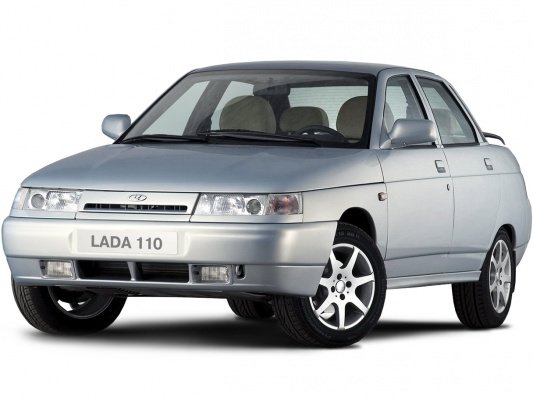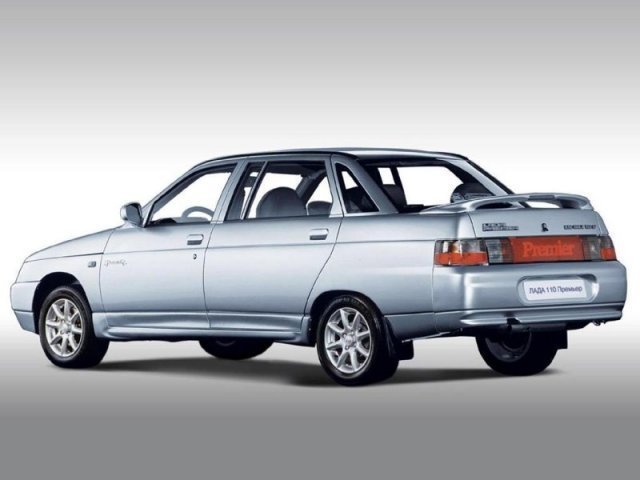Filed Under: Material culture > Arts or design > Lada 110-series
Lada 110-series
[2 items]
The Lada 110, also known as the VAZ-2110, was the first post-Soviet design from the venerable Soviet car manufacturer AvtoVAZ. By the mid-1990s, automobiles had become an unlikely site of early privatization—and its criminal underbelly. Even before the fall of the Soviet Union, eager and unscrupulous entrepreneurs like Boris Berezovsky (1946-2013) were able to open private dealerships for AvtoVAZ vehicles. However, the dealerships soon became criminal enterprises engaged in stealing cars directly from the increasingly decrepit factory and selling them at a 100% profit. As Berezovsky’s LogoVAZ dealerships became rich, the factory lost money. By the time it was privatized as a joint-stock company and listed on the Moscow Stock Exchange in 1993, it was deeply in debt and hadn’t paid workers in months.
Despite falling (or absent) incomes and rampant inflation, demand for cars remained strong in the post-Soviet years. According to historian Lewis Sieglebaum, car ownership doubled in the first post-Soviet decade, from 75 to 150 per thousand inhabitants: “The total number of cars [in Russia] was approximately 11 million in 1992, surpassed 20 million by 2000, and reached 25 million in 2003.”
Some of this increase was driven by foreign imports, but the most popular models remained domestic automobiles, led by the Lada 110-series. Introduced in 1995, the Lada 110 was the first update to the basic AvtoVAZ sedan in decades. Its more streamlined design was meant to modernize its Soviet predecessor’s iconic boxy shape, but its selling point was always its reliability—or at least its repairability. Domestic cars were easier to fix, easier to find parts to fit, and more familiar to consumers than foreign imports.
But the post-Soviet explosion in car ownership could not save the financial situation of AvtoVAZ, and foreign investors and competitors slowly took over. A GM-AvtoVAZ joint venture in 2001 gave the company a boost. In 2008, AvtoVAZ attracted a $1 billion investment from Renault, only to narrowly avoid bankruptcy the following year. It continued to falter, and by 2014, Renault-Nissan had purchased a majority stake. Failed privatization had led to the foreign ownership of Russia’s flagship auto manufacturer.
Despite falling (or absent) incomes and rampant inflation, demand for cars remained strong in the post-Soviet years. According to historian Lewis Sieglebaum, car ownership doubled in the first post-Soviet decade, from 75 to 150 per thousand inhabitants: “The total number of cars [in Russia] was approximately 11 million in 1992, surpassed 20 million by 2000, and reached 25 million in 2003.”
Some of this increase was driven by foreign imports, but the most popular models remained domestic automobiles, led by the Lada 110-series. Introduced in 1995, the Lada 110 was the first update to the basic AvtoVAZ sedan in decades. Its more streamlined design was meant to modernize its Soviet predecessor’s iconic boxy shape, but its selling point was always its reliability—or at least its repairability. Domestic cars were easier to fix, easier to find parts to fit, and more familiar to consumers than foreign imports.
But the post-Soviet explosion in car ownership could not save the financial situation of AvtoVAZ, and foreign investors and competitors slowly took over. A GM-AvtoVAZ joint venture in 2001 gave the company a boost. In 2008, AvtoVAZ attracted a $1 billion investment from Renault, only to narrowly avoid bankruptcy the following year. It continued to falter, and by 2014, Renault-Nissan had purchased a majority stake. Failed privatization had led to the foreign ownership of Russia’s flagship auto manufacturer.

